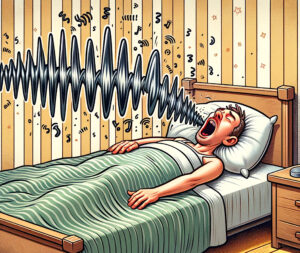Introduction to Sleep Apnea
Sleep apnea, a common but often overlooked sleep disorder, affects millions of people worldwide. It occurs when breathing repeatedly stops for short periods of time during sleep. Not only does this lead to poor sleep quality, but it can also have serious health consequences. In this guide, you will learn everything you need to know about the causes, symptoms and treatment options of this complex disease.
What exactly is sleep apnea?
Sleep apnea is more than just simple snoring. It occurs when the airways become partially or completely blocked during sleep, resulting in repeated pauses in breathing. These interruptions can affect the body’s oxygenation and greatly reduce the quality of sleep.
Common Causes and Risk Factors
- Anatomical features: Bottlenecks in the throat can impede the air supply.
- Overweight: Extra tissue in the throat area narrows the airways.
- Age: The risk increases with age, especially from the age of 45.
- Lifestyle factors: Smoking and alcohol consumption increase the risk.

Symptoms that should not be ignored
The symptoms of sleep apnea can be subtle, but their effect on health and quality of life is significant. These include:
- Loud and persistent snoring
- Observed breathing interruptions during sleep
- Excessive daytime sleepiness
- Frequent headaches in the morning
- Dry mouth or sore throat when waking up
Standard and novel treatment methods
Treatment for sleep apnea is varied and depends on the severity of the condition. The most common methods are:
Traditional approaches:
- CPAP Machine: A continuous flow of air keeps the airways open.
- Mandibular protrusion splint: Holds the tongue and lower jaw in such a way that the airways remain open.
- Surgical interventions: Offered as a solution in certain cases.
Innovative treatment methods:
- Drug therapy approaches: Still in the research phase, they show promising results in reducing breathing interruptions.
- Lifestyle Changes: Weight loss and avoidance of alcohol and smoking.
Preventive measures and self-help
In addition to medical treatments, there are also measures that everyone can take on their own:
- Maintain a healthy weight: Being overweight can make sleep apnea worse.
- Healthy lifestyle: Abstaining from smoking and alcohol.
- Optimize your sleeping position: Avoiding lying on your back during sleep.
Possible consequences if sleep apnea is left untreated
Untreated sleep apnea carries risks that go far beyond the sleep disorder, such as an increased risk of cardiovascular disease and an increased risk of accidents due to daytime sleepiness. In addition, the quality of life can be significantly affected by the constant exhaustion.
Final Thoughts
Sleep apnea is a serious condition, but it can be treated effectively. It is important to seek medical advice and choose the appropriate treatment if sleep apnea is suspected. With the current developments in medical research, there is hope for more innovative treatment options that could further improve the lives of those affected.
